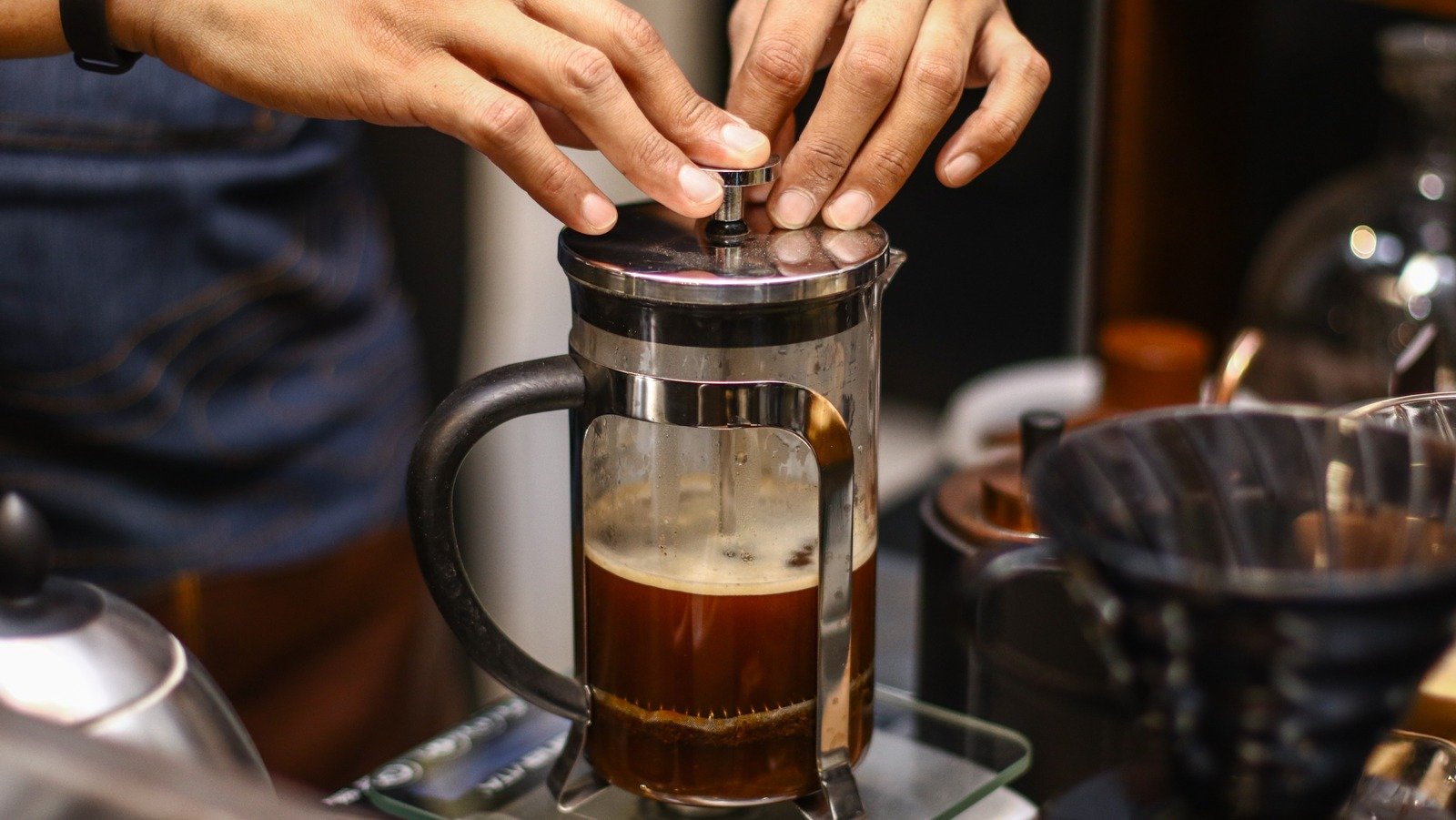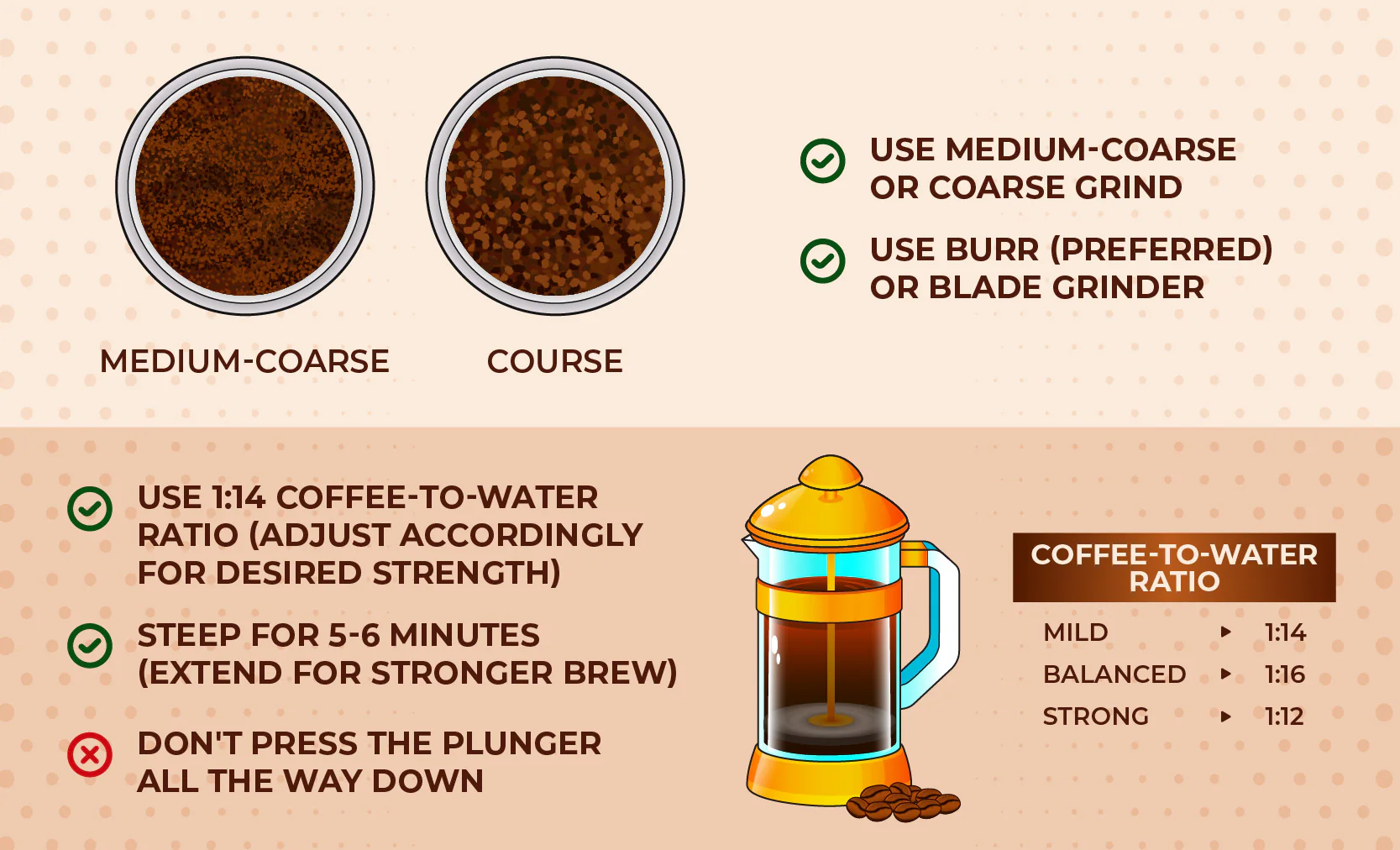How to Use a French Press Coffee Maker
The Complete Beginner’s Guide

☕ The Morning That Changed My Brew Game
The first time I used a French press, I made a total mess. I dumped in pre-ground coffee without measuring, poured boiling water in, stirred with a spoon I just used for peanut butter, and pressed down immediately. The result? A bitter, silty disaster.
But I learned. And now I brew café-quality coffee at home, without fancy machines — just a classic French press and a few tips that I’m going to share with you today.
Whether you’re a total beginner or someone who wants to level up your brewing routine, this guide will walk you through exactly how to use a French press coffee maker, step by step.
What Is a French Press?
A French press (also called a press pot, cafetiere, or plunger pot) is a manual coffee brewing device that uses immersion and pressure to extract flavor from ground coffee.
It consists of:
-
A glass or stainless steel carafe
-
A metal mesh filter
-
A plunger
-
A lid and handle
Unlike drip machines or pod brewers, the French press gives you full control over every variable: grind size, water temperature, steeping time, and ratio.
And the payoff? Rich, full-bodied coffee with natural oils and a deep flavor you can’t get from paper-filtered brewing methods.
What You’ll Need
Before you get started, gather the following:
-
French press (any size — most are 32 oz or 1 liter)
-
Coarsely ground coffee (preferably freshly ground)
-
Hot water (just below boiling, ~200°F or 93°C)
-
Digital scale (optional but recommended)
-
Spoon or wooden stirrer
-
Timer
Step-by-Step: How to Use a French Press Coffee Maker
🔹 Step 1: Measure Your Coffee and Water
Golden Ratio:
-
1 gram of coffee per 15–17 grams of water
-
Or: 2 tablespoons of coffee per 6 ounces of water
For a standard 32 oz (1 liter) French press:
-
Use 55 grams (about 8 tablespoons) of coarsely ground coffee
-
Add 900–950 ml of water
👉 Why coarse grind? Fine grinds clog the mesh filter and over-extract the coffee, leading to bitterness.
🔹 Step 2: Preheat the French Press
Pour a little hot water into the empty press, swirl it around, and discard. This warms the glass and helps maintain the water temperature during brewing.
🔹 Step 3: Add Coffee Grounds
Pour your measured coarse ground coffee into the bottom of the French press.
🔹 Step 4: Pour Hot Water
Heat water to just under boiling (around 200°F / 93°C). Pour it evenly over the grounds.
-
Pour halfway first
-
Let it bloom for 30 seconds — this releases trapped carbon dioxide and improves flavor
-
Then pour the rest of the water to your desired fill level
👉 Stir gently with a wooden or plastic spoon to ensure all grounds are soaked (avoid metal spoons if your press has a glass carafe).
🔹 Step 5: Place the Lid and Let It Steep
Put the plunger on top but don’t press it down yet.
Let the coffee steep for 4 minutes — this is the sweet spot for extraction. Want it stronger? Steep up to 5 minutes.
🔹 Step 6: Press and Pour
Slowly press the plunger down — straight and steady. If it feels too hard, your grind is too fine. If it plunges too easily, the grind may be too coarse.
Now pour and enjoy!
☕ Pro tip: Don’t leave the rest of the coffee sitting in the press — it’ll keep extracting and turn bitter. Pour leftovers into a thermal carafe.
Common Mistakes to Avoid
-
❌ Using pre-ground drip coffee — it’s too fine for French press
-
❌ Boiling water directly on coffee — it burns the grounds
-
❌ Over-steeping — can lead to a harsh, muddy flavor
-
❌ Pressing too fast or hard — risks splashing and bitterness
-
❌ Not cleaning the press thoroughly — leftover oils = rancid taste
Why French Press Coffee Tastes Better
-
No paper filter = all the natural oils stay in your cup
-
Full immersion = more consistent extraction
-
Control = You decide the grind, time, and ratio
-
Flavor = Rich, bold, and slightly heavier body than drip coffee
It’s the ideal method if you want more depth and texture in your cup.
Clean-Up Tips
-
Dump the used grounds in your compost bin (or trash — not your sink!)
-
Rinse the parts right away
-
Every few uses, disassemble and scrub the mesh screen thoroughly
Clean gear = clean-tasting coffee.
Coffea Alchemy’s Take on the French Press
At Coffea Alchemy, we’re big believers in slow brewing. French press is a great way to connect with your coffee — no automation, no plastic pods, just beans and water and a moment of intention.
We always recommend this method to anyone looking to deepen their appreciation of coffee at home.
French Press Brewing Chart (Quick Reference)
| Cups | Water (ml) | Coffee (g) | Steep Time |
|---|---|---|---|
| 1 | 250 ml | 15–17 g | 4 minutes |
| 2 | 500 ml | 30–34 g | 4 minutes |
| 4 | 1 liter | 55–60 g | 4–5 minutes |
French Press FAQ
☕ Can I use regular ground coffee in a French press?
You can, but it’s not ideal. Regular ground coffee is too fine and will result in a sludgy, over-extracted brew.
☕ Do I need a scale to make French press coffee?
A scale helps with precision, but you can use tablespoons as a backup.
☕ How strong is French press coffee?
It depends on your ratio and steep time, but it’s typically bolder and more full-bodied than drip.
☕ Can I use the French press for cold brew?
Yes! Use cold water, double the grounds, and steep it in the fridge for 12–16 hours.
The Final Sip
The French press may seem intimidating at first, but once you understand the rhythm — grind, pour, steep, press — it becomes second nature. It’s a simple yet powerful way to upgrade your morning ritual, deepen your appreciation for coffee, and brew with intention.
So now that you’ve got the steps, the ratios, and the rhythm — are you ready to press your perfect cup?
Related Post
Our newsletter
Subscribe to our weekly newsletter & keep up with our latest recipes and organized workshops. You can unsubscribe at any time.


